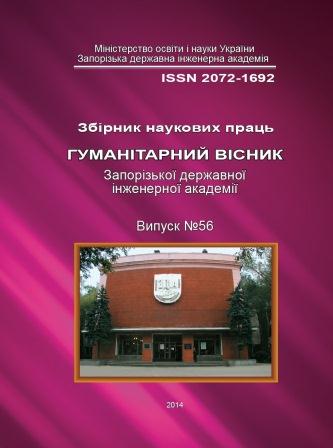Slovakia – the country of cultural monuments
DOI:
https://doi.org/10.30839/2072-7941.2014.22727Ключові слова:
tourism, cultural heritage, cultural tourism, reservoir of cultural and social monumentsАнотація
Slovakia has had an enormous potential of cultural sites of different origin. To reach optimum exploitation of its potential and economic benefits, it is necessary to create competitiveness with surrounding states, to seek sustainable tourism focused on specific destinations and to create products through effective marketing tools. Since modern tourism is mainly based on small and medium enterprises, government support is needed as well as the use of funds from the EU projects. The demand for cultural tourism in the future will continue to grow as more and more people are comfortable with completing secondary education and the trend is to continue and complete at least the first level of higher education resulting in higher demands on the provision of tourism services. An important role in vacation planning will be played by history, culture, arts, education, or discovering something new. Consequently, there will grow demand for special products, which will cover various aspects. "In terms of development and prosperity of this industry is, therefore, as important not only the quality and complexity of tourism services provided by the private sector, but also the availability of the location, nature of the country, its natural, cultural potential, the overall level of general infrastructure, scope and quality of public services, etc. "(Malá&Netková, 2002). The paper is based on theoretical knowledge defining the concepts of cultural heritage characteristics necessary for inclusion of the sights into cultural heritage. There are also selected cultural monuments analyzed from different aspects. Each country is trying to attract as many tourists as possiblan Slovakia cannot be an exception.Посилання
DUDÁŠ, M. & GOJDIČ, I. & ŠUKAJLOVÁ, M. (2007). Cultural beauties of Slovakia. Wooden Churches. Bratislava, Dajama.
DUDÁŠ, M. & JIŢOUŠEK, A. (2010). Wooden churches, temples and bell tower in Slovakia. Košice, JES.
DVOŘÁKOVÁ, V. (2009). Cultural Heritage of Slovakia - World Cultural Heritage UNESCO. Bratislava, Dajama.
GÚČIK, M. (2010). Tourism. Introduction to the Study. Banská Bystrica: Slovak-Swiss Tourism.
GUČIK, M. (2006). Management of tourism. Banská Bystrica: Slovak – Swiss Tourism.
HESKOVÁ, M. (2006). Tourism. Praha, Nakladatelství FORTUNA.
HORNER S. & SWARBROOKE J. (2003). Tourism, hotel and catering, leisure. Praha, Nakladatelství GRADA.
HVIZDOVÁ, E. (2013). Principles of Marketing. Prešov: ISM SLOVAKIA.
HVIZDOVÁ, E. & HVIZDOVÁ, E. (2012). Theoretical approaches to examining consumer behavior in the tourism market. Warszawa: Instytut Studiow Medzynarodovych i Edukacji Humanum.
INDROVÁ, J.: Tourism. Praha : Nakladatelství Oeconomica, 2007, 120 s. ISBN 978-80-245-1252-5.
KONEČNÁ, A.; MICHALOVÁ, V.; NOVACKÁ, Ľ. Services and Tourism. Bratislava: SPRINT.
KÁLLAY, K et al. (2009). Churches. Bratislava : Ikar.
KRIŠKOVÁ, Z. & TOMAŠKIN (2007). Cultural and natural heritage of the country. Banská Bystrica : FPV UMB.
MAKÝŠ, O. (2004). Technology renovation of buildings. Bratislava: JAGA GROUP.
MALÁ, V. & NETKOVÁ, J. (2002). Fundamentals of Tourism. Praha: VSE.
McKercher, B. & CROS, H. (2002). Cultural Tourism: The Partnership Between Tourism and Cultural Heritage. THHP - The Haworth Hospitality Press.
NOVACKÁ, Ľ. (2010). Tourism and European union. Bratislava: Vydavateľstvo SPIRIT.
16th Law no. 49/2002 on the protection of monuments
17th § 1, § 2, ods.1 and 2 of the Act no. 115/1998 the museums and galleries and the protection of valuable objects for museums and galleries
18th Marketing Strategy of the Slovak Agency for Tourism 2011-2013
www.slovakia.eu.sk/hrady-a-zamky.html
www.hrady-zamky.org
www.hrady.sk
http://slovakia.eu.sk/unesco.html
http://fpv.uniza.sk/orgpoz/unesco/dedicstvo.html
http://www.tophotelierstvo.sk/domaci-cestovny-ruch/turizmus/hotelierstvo-v-e-a-na-slovensku (09.03.2012).
www.culture.gov.sk/
##submission.downloads##
Опубліковано
Номер
Розділ
Ліцензія
Авторське право (c) 2015 Eva Hvizdová, Eva Hvizdová, Katarína Radvanská

Ця робота ліцензується відповідно до Creative Commons Attribution 4.0 International License.
Подаючи текст статті до редакції, автор погоджується з тим, що авторські права на статтю переходять до видавця, при умові, якщо стаття приймається до публікації. Авторські права включають ексклюзивні права на копіювання, розповсюдження і переклад статті.
Автор зобов’язаний:
- нести відповідальність за достовірність представленої інформації та оригінальність поданих матеріалів своєї роботи до друку;
- зберігати за собою всі авторські права і одночасно надавати збірнику наукових праць право першої публікації, що дозволяє розповсюджувати даний матеріал з підтвердженням авторства і первинності публікації у даному збірнику;
- відмова в публікації не обов’язково супроводжується роз’ясненням причини і не може вважатися негативним висновком відносно наукової і практичної цінності роботи.
Автори зберігають за собою авторські права на роботу і представляють збірнику наукових праць «Гуманітарний вісник Запорізької державної інженерної академії» право першої публікації роботи, що дозволяє іншим розповсюджувати дану роботу з обов’язковим збереженням посилань на авторів оригінальної праці і оригінальну публікацію у даному збірнику.
Автори зберігають за собою право заключати окремі контрактні домовленості, що стосуються не-ексклюзивного розповсюдження версії роботи в опублікованому вигляді (наприклад, розміщення її в книгосховищі академії, публікацію в монографії), з посиланням на оригінальну публікацію в збірнику наукових праць.
Автори мають право розміщати їх роботу в мережі Інтернет (наприклад, в книгосховищі академії чи на персональному сайті) до і під часу розгляду її в даному збірнику наукових праць, так як це може привести до продуктивного обговорення її даним збірником і великої кількості посилань на дану роботу (visnyk.zgia.zp.ua)

